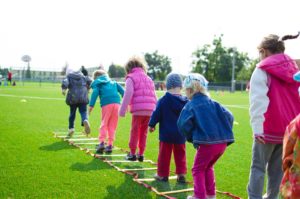Latest Posts
- Have a purpose when backyardingAugust 5 2021
- Study: Time outside alters our microbiomeAugust 4 2021
- Happy National Mutt Day from Mo-MoJuly 27 2021
- New home? Avoid these common mistakes in your yard.July 26 2021
- Infographic: Plan a backyard staycation this summerJuly 22 2021
Categories
Archive
December 17th

A study released this summer draws a link between the greenness of a residential neighborhood and children’s neurobehavioral health. Neurobehavioral health refers to the relationship between the action of the nervous system and behavioral disorders.
For the cross-sectional study, scientists used a population-representative sample of 1,817 school children in South Korea. Parents or guardians completed a checklist to assess their children’s neurobehavioral health. Those responses were compared with the level of greenness in their neighborhood, which was measured using the vegetation index collected via NASA data.
Higher levels of greenness in the children’s neighborhood were associated with a lower incidence of behavioral problems. The increased level of greenness had the greatest impact on attention problems and aggressive behaviors, according to study results.
Remember, “green” starts at your own backdoor with your personal living landscape. Putting the right plant in the right place and planting for your lifestyle and family needs are a few key TurfMutt Foundation principles to keep in mind.
To learn more about the benefits of our living landscapes at our homes and in our communities, go to SaveLivingLandscapes.com.





